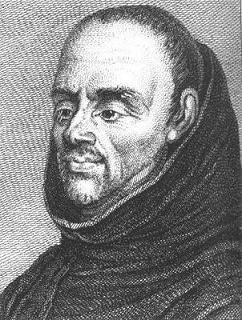Charles Plumier facts for kids
Charles Plumier (born April 20, 1646 – died November 20, 1704) was a famous French botanist. A botanist is a scientist who studies plants. The beautiful flower genus Plumeria (also known as frangipani) is named after him. Many people think Plumier was one of the most important plant explorers of his time. He traveled three times to the West Indies (islands in the Caribbean Sea) to study plants. His trips led to a huge book called Nova Plantarum Americanarum Genera (1703–1704). He was even chosen to be the official botanist for King Louis XIV of France.
Contents
About Charles Plumier
Charles Plumier was born in Marseille, France. When he was 16, he joined a religious group called the Minims. He loved learning and spent his time studying mathematics and physics. He was also very good at making scientific tools. Besides that, he was an excellent artist who could draw, paint, and even work with wood on a lathe.
Later, Plumier went to a French monastery in Rome, Italy. There, he learned even more about botany from other religious scholars, especially a botanist named Paolo Boccone. After returning to France, he became a student of Joseph Pitton de Tournefort, another famous botanist. Plumier often went on plant-finding trips with Tournefort.
He also explored the coasts of Provence and Languedoc in France. His big adventures began in 1689. The government asked him to go with a collector named Joseph Donat Surian to the French Antilles (part of the West Indies). Plumier's job was to draw and write about the plants they found. They stayed there for a year and a half.
This first trip was very successful! Plumier wrote a book about it called Description des Plantes d'Amérique (1693). Because of his success, King Louis XIV made him the royal botanist. The King then sent him on a second trip to the Antilles in 1693 and a third trip in 1695. While in the West Indies, a botanist from the Dominican group, Jean-Baptiste Labat, helped him.
Plumier collected an amazing amount of information and specimens. Besides his big book, Nova Plantarum Americanarum Genera, he also wrote Filicetum Americanum (1703), which was all about ferns. He also wrote shorter articles for scientific magazines like the Journal des Savants.
In 1704, Plumier was getting ready for his fourth trip. He planned to visit Peru to find the true cinchona tree, which is used to make medicine. But he became very sick with a lung illness called pleurisy and sadly died in Puerto de Santa Maria, near Cadiz, Spain.
When he died, Plumier left behind 31 handwritten books filled with notes and descriptions. He also had about 6,000 drawings! About 4,000 of these drawings were of plants. The rest showed American animals, especially birds and fish. Another botanist, Herman Boerhaave, had 508 of these drawings copied. These copies were later published in a special collection called "Plantarum americanarum..." (1755–1760). Plumier also proved that the cochineal (a type of insect used to make red dye) is an animal, not a plant.
What Charles Plumier Achieved
Many scientists from the 1700s greatly admired Charles Plumier. Tournefort and Linnaeus, two very important botanists, named the plant genus Plumeria in his honor. This plant family, which has about 40 different types, grows naturally in Central America.
- Discovering Fuchsia: Plumier found and described the plant Fuchsia on the island of Hispaniola in the Caribbean in 1696-1697. He published his first description of Fuchsia in 1703.
- Naming Begonia: Charles Plumier named the plant genus "Begonia" after Michel Bégon. Bégon was the governor of Haiti and had recommended Plumier to King Louis XIV as an official plant collector.
- Teaching Others: The French explorer and botanist Louis Feuillée was one of Plumier's students.
- His Books:
* His first major book was Description des plantes de l'Amérique (Paris, 1693). It had 108 plates (pictures), and half of them showed ferns. * Next came Nova plantarum americanarum genera (Paris, 1703–04), with 40 plates. In this book, he described about 100 new plant groups (genera) and around 700 new plant types (species). Later, Linnaeus used many of Plumier's new plant groups in his own system of classifying plants. * Plumier also had a book ready to be printed called Traité des fougères de l'Amérique (Paris, 1705), which had 170 excellent pictures of ferns. * He also wrote a very different kind of book about turning wood on a lathe, called L'Art de tourner (Lyons, 1701). This book was even translated into Russian by Peter the Great!
Legacy
Plumier's collection of plant specimens is kept in Paris at the National Museum of Natural History, France. A scientist named Alicia Lourteig took care of this collection in the 1900s.
Animal Named After Plumier
- A type of fish called the goby Sicydium plumieri (discovered by Bloch in 1786) is named after him.
See also
 In Spanish: Charles Plumier para niños
In Spanish: Charles Plumier para niños
- List of Roman Catholic scientist-clerics
Images for kids



